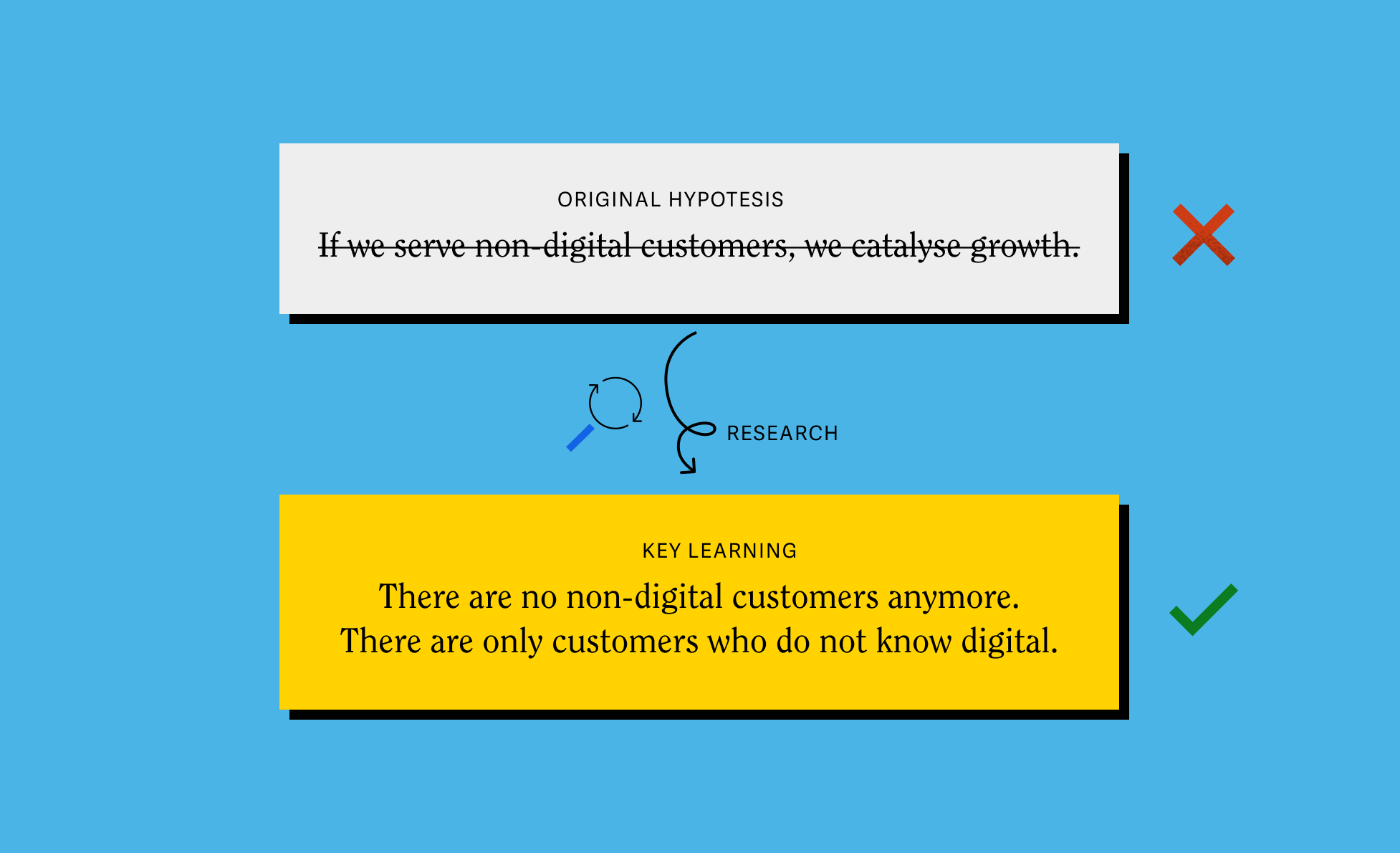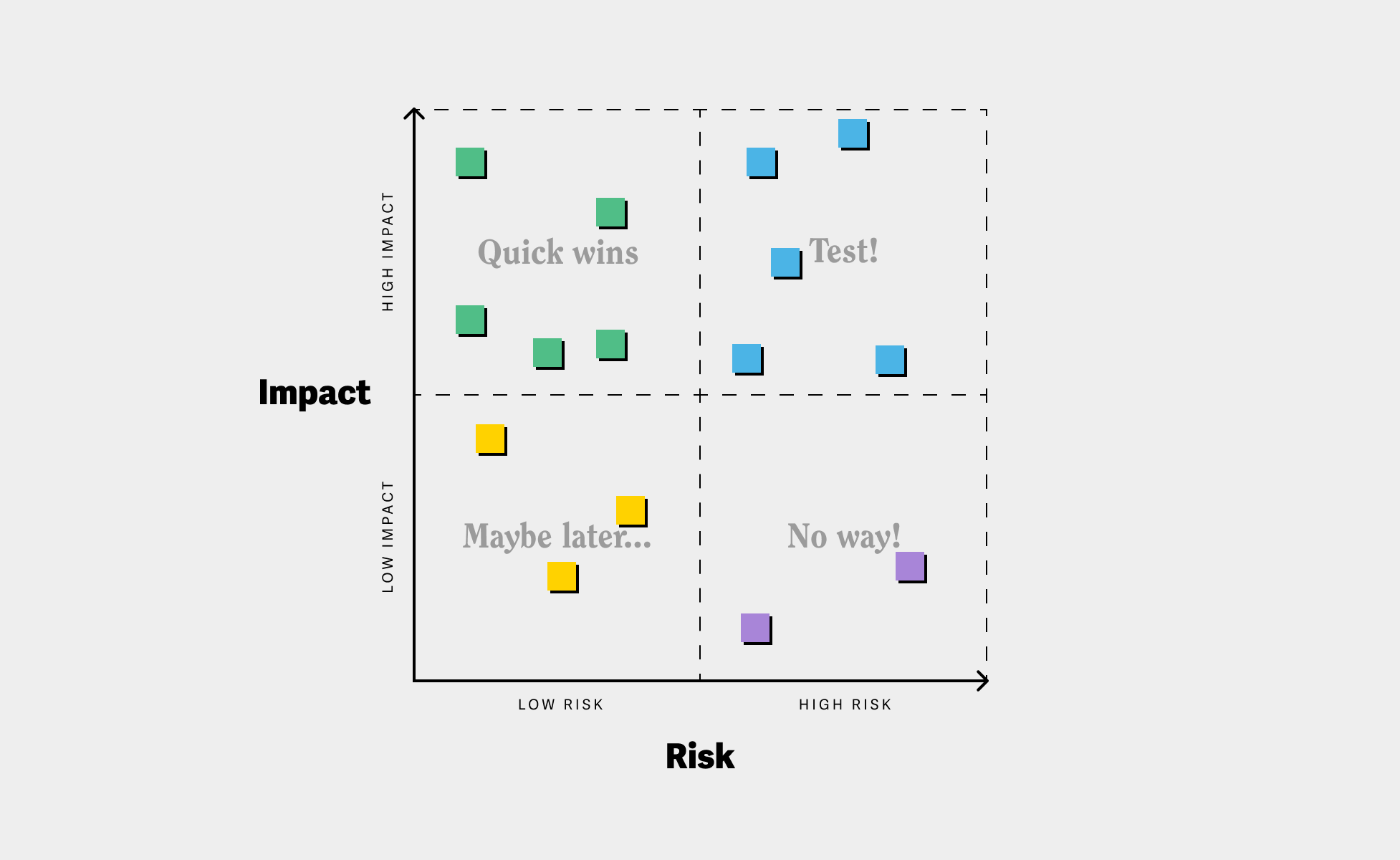Defining strategy to create consistent multi-channel experience
Unified CX strategy drove 244% sales growth for Orange

Results
50+
customer interviews
104%
increase in leads
244%
increase in signed contracts
In short
- Services
- Service design
- Industry
- Telecommunication
- Capabilities
- Customer data
- Customer journeys
- Ecommerce
- Strategy
- Testing
- User experience
- Visit
- orange.sk
Challenge
Create synergies between different digital channels (website, mobile application and customer zone) while keeping their performance curves in rising trend. Optimize digital customer journey to acquire new customers and improve customer retention through digital.
Solution
Unified digital strategy synchronizing all digital channels based on detailed customer journey mapping. Umbrella concept that covers functioning of the channels in the upcoming year, improves digital customer experience and defines specific projects per each channel.
During 5 intense weeks of research, analysis and brainstorming, we used a proven method: design thinking. Our initial hypothesis was: “If we serve non-digital customers, we catalyse growth.” The target group represents people who already use services by the operator but do not have experience with online purchase. The goal was to understand customers’ main motivations when deciding for an Orange product and their barriers for buying them online.
"How can we improve the customer experience on specific channels (web, customer zone, mobile app) so that people who have only purchased products offline so far will turn into online customers?"
Just like any other research and design project, we approached this challenge as an agile team mixing members of our design studio and client’s stakeholders together. The multidisciplinary team covered expertises such as UX research, analytics, business strategy, design, marketing and development. It helped us fasten the process of decision making and create empathy towards the customers and their journeys across various departments in the company.
Background
Orange Slovensko is the leader of the Slovak mobile telecommunications market. In 3 years of our fruitful cooperation, we delivered numerous projects catalysing growth in e-commerce.
However, we felt the need of creating synergies between individual digital channels. Unified approach to the website, customer zone and mobile app would not only accelerate performance growth, but also make digital customer experience consistent and boost customer loyalty.
After extensive customer journey mapping we defined a long-term unified digital strategy.
Orange digital strategy: Unified strategy for consistent customer experience
Empathizing
When defining product strategy , it is crucial for the strategist to deeply understand customers' preferences for every aspect of the experience. To learn to walk in their shoes, we conducted extensive mapping of customer journeys for various types of Orange customers in the form of 2-day workshops.
Opening Lightning talks by experts and product owners got everybody on the same page and resulted in an extensive proto-journey, identifying potential pain-points. We validated our hypothesis through customer interviews right on the spot and created a real map of customer journeys. Then we prioritised the key moments, identified shortcomings, created hypotheses and formulated potential experiments. Each workshop ended with drawing dozens of possible solutions.

Carpet bombing
The customer journey map provided us a good knowledge base about non-digital customers and we already spotted some patterns. In order to prove them, we carried out Carpet-bombing – a series of 30 intense customer interviews in just 3 days, asking a question:“Tell us about the barriers that prevent you from online shopping.” These intense dialogues, whether in person or by telephone, helped us uncover the true motives of customer behaviour.
Defining a problem
The pile of insights needed prioritisation. We analysed observations, synthesised them, and suddenly we discovered a surprising insight that moved us closer in understanding to the target group: There actually were no non-digital customers. All customers across Slovakia, all ages, all social groups, all of them already have an experience with online shopping.

Ideation
Being sure about the core problem, our focus switched to the concept, an underlying motive that would respond to our design challenge. We intended to strengthen customers’ trust in digital purchase and boost their loyalty at the same time, so that they would renew their plans digitally. In 2-member groups we utilised many creative methods such as brainstorming, the “worst possible idea” or brain-writing. Our final idea concept derives from the fact that we no longer look at the customer through the optics of channels but from the perspective of experience.
In addition, we created a detailed customer journey covering stages of the entire 2-year contract, with specific sales and care operations leading to better customer satisfaction. In collaboration with channels’ product owners we defined hypothetical solutions that support our concept. They were placed into the map with at least one effective validation proposal per solution.
The final selection of hypotheses was prioritised on the impact-risk matrix, comparing how risky it is to implement a solution and what impact on customers we expect out of it. The proposals in the “high impact” quadrants are worth trying: they are either safe and ready to be implemented, or risky but impactful so we need to test them as soon as possible.
Ongoing testing and prototyping
We finished with the roadmap for the upcoming year in our hands. It is currently being implemented by picking one hypothesis at a time, testing its viability and implementing it further. In other words, conscious decisions reflect specific needs of every single channel.

Results
Although we are still implementing, the results seem very promising already. In half a year, the total amount of leads has increased by 104% and the number of successful transactions has increased by 244%. The fact of sales growing even faster then acquisition is a proven signal that the digital channels are able to bring more quality leads when developed strategically, in synergy.

Key learnings
1. The method of Carpet bombing research is able to reveal the key insight about the target audience.
In our case, it steered the direction of the project, saving the team from wasting time on a non-existing persona.
2. Collaborative approach putting stakeholders and designers together is a win-win, mainly for customers.
Clients’ representatives tested alongside the researchers and ideated solutions with the designers. It increases empathy with the customers and provides a satisfying feeling of participation and impact on the final result.
3. Sprint approach benefits even a challenge like the product strategy definition.
1-week super-fast sprints (Design sprint, Carpet bombing) meant a big step forward towards our result. We were able to deliver the project in one month of intense work.
Are you interested in this project?
Feel free to ask
Our expert Betka will gladly clarify all the details, and we will look at how we can design a similar service in the context of your business challenge.
Get in touch with Betka
Don’t miss out on
our newsletter
